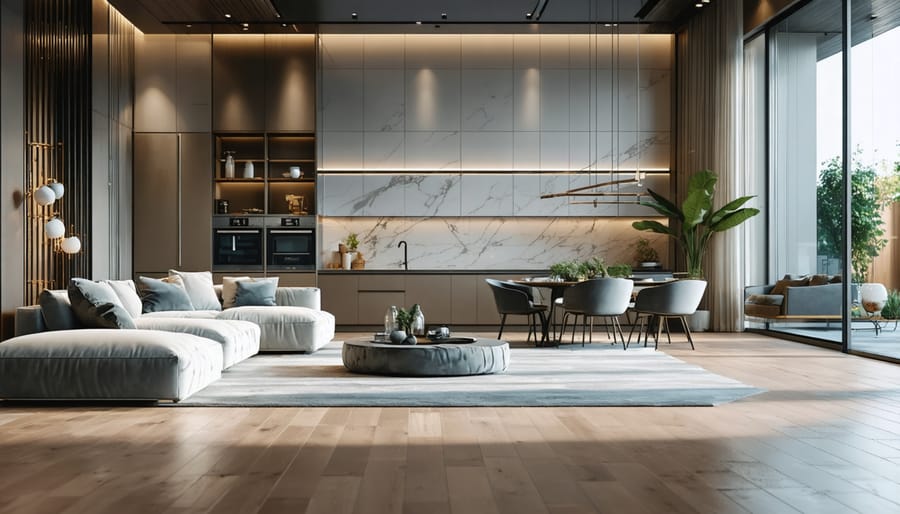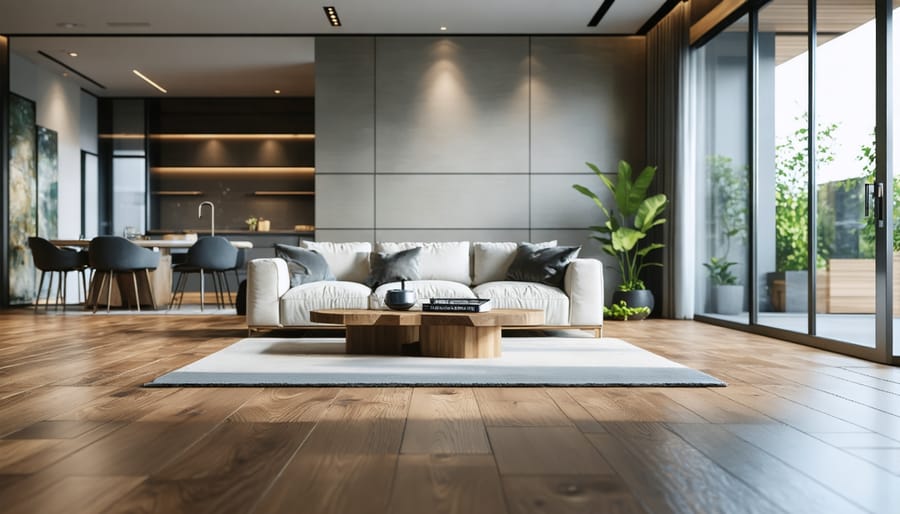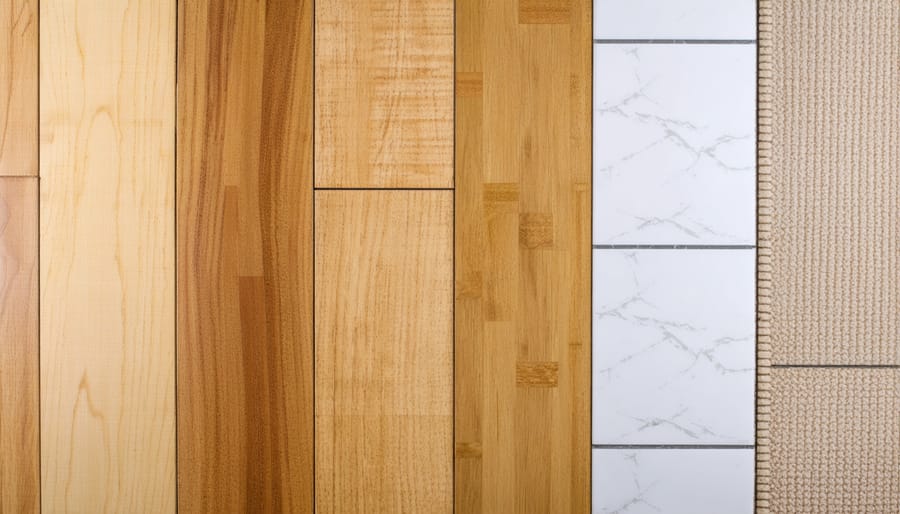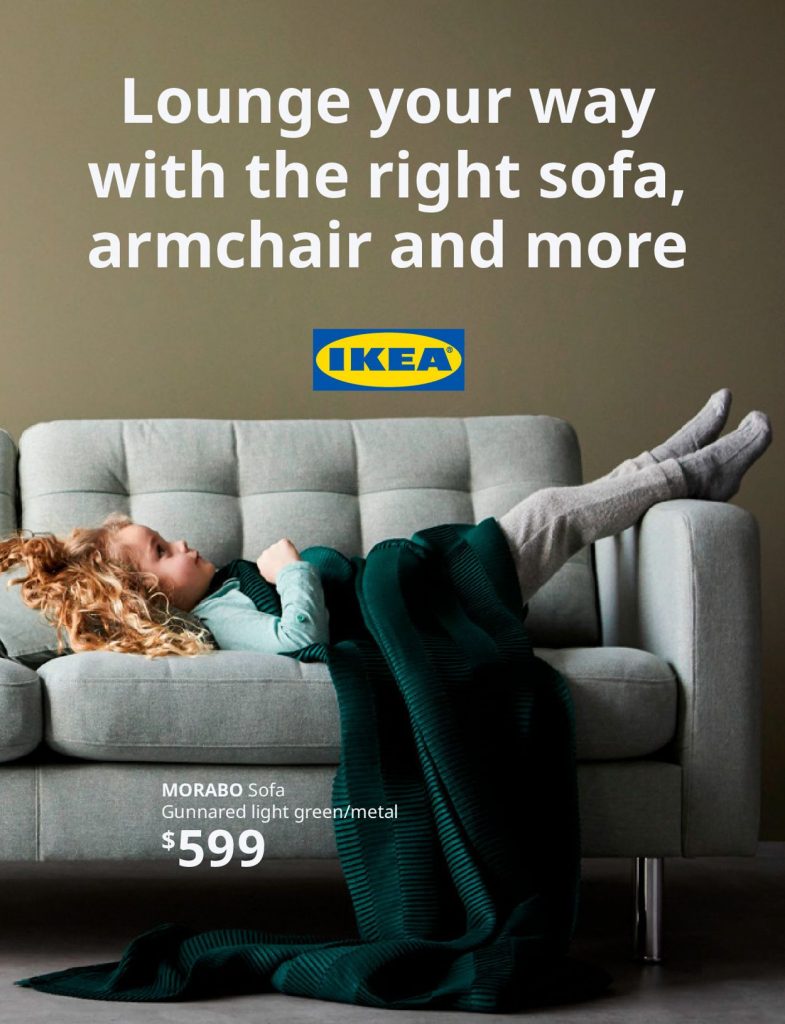
Modern Flooring That Makes Your Interior Design Pop (Pro Quality Tips)
Transform your living spaces with premium interior finishes that blend durability and sophistication. Today’s modern flooring trends go beyond mere aesthetics, incorporating advanced materials and smart technologies that enhance both form and function. From engineered hardwoods that resist moisture damage to nano-ceramic coatings that prevent scratches, quality finishes create lasting value while reducing long-term maintenance costs.
Select materials based on room-specific requirements – moisture-resistant porcelain for bathrooms, sound-dampening cork for bedrooms, and scratch-resistant quartz composites for high-traffic areas. Pair these with professional installation techniques that address subfloor preparation, proper moisture barriers, and precise finishing details to ensure optimal performance.
The right interior finishes serve as the foundation for your entire design scheme while protecting your investment. Whether you’re renovating a single room or updating an entire property, focusing on quality materials and expert installation creates spaces that maintain their beauty and functionality for decades.
Premium Flooring Materials Transforming Modern Spaces
Luxury Vinyl and Engineered Solutions
Today’s luxury vinyl and engineered wood options represent some of the most cutting-edge flooring solutions available, offering the perfect blend of beauty and practicality. Modern luxury vinyl planks (LVP) have come a long way from their predecessors, featuring ultra-realistic wood and stone appearances that can fool even the most discerning eye. These products incorporate advanced wear layers that resist scratches, stains, and daily wear while maintaining their gorgeous appearance for years.
Engineered wood flooring provides the authentic charm of hardwood with enhanced stability and moisture resistance. Its layered construction prevents the warping and expansion issues common in traditional hardwood, making it ideal for bathrooms, kitchens, and below-grade installations. Many options now include aluminum oxide finishes for superior durability and UV-cured coatings that maintain their luster without frequent refinishing.
Both materials excel in high-traffic areas and are perfect for homes with children or pets. They’re also incredibly DIY-friendly, featuring click-lock installation systems that eliminate the need for adhesives or specialized tools. The waterproof properties of luxury vinyl and the dimensional stability of engineered wood mean you can achieve the look you want without compromising on practicality. Plus, these materials are compatible with underfloor heating systems, adding comfort and value to your space.
Sustainable and Eco-Friendly Options
Today’s environmentally conscious homeowners have more eco-friendly flooring options than ever before. Bamboo flooring leads the pack as a sustainable alternative to traditional hardwood, offering impressive durability and a modern aesthetic. This fast-growing grass reaches maturity in just 5-7 years, compared to decades for hardwood trees, making it an environmentally responsible choice.
Cork flooring, harvested from the bark of cork oak trees without harming them, provides a unique combination of comfort and sustainability. Its natural cushioning effect makes it perfect for kitchens and other areas where you spend long periods standing. Plus, it’s naturally antimicrobial and resistant to mold and mildew.
Reclaimed wood flooring gives new life to old materials while adding character to your space. Each board tells a story, and the aged patina creates a warm, lived-in feel that’s impossible to replicate with new materials. For those seeking modern options, recycled glass tiles and rubber flooring made from repurposed materials offer durability while reducing landfill waste.
These sustainable choices don’t just benefit the environment – they can also improve indoor air quality by eliminating harmful VOCs commonly found in traditional flooring materials. Many are also easier to maintain and can last longer than conventional options, making them smart investments for both your home and the planet.
Smart Integration and Tech-Enhanced Flooring
Heated Flooring Systems
Radiant floor heating has become increasingly popular for creating a luxurious, comfortable living space. This innovative heating solution installs beneath your flooring material, providing consistent warmth from the ground up. Unlike traditional forced-air systems, heated floors distribute warmth evenly across the room, eliminating cold spots and reducing energy costs.
There are two main types of heated flooring systems: electric and hydronic. Electric systems use heating cables or mats and are ideal for single-room installations, particularly in bathrooms and kitchens. Hydronic systems circulate heated water through tubes and are more cost-effective for whole-house heating, though they require more extensive installation.
Installation complexity varies by system type and flooring material. While some electric systems can be DIY-friendly, hydronic systems typically require professional installation. The good news is that heated floors work well under most flooring materials, including tile, stone, hardwood, and luxury vinyl.
When planning a heated floor installation, consider factors like room size, insulation quality, and your existing heating system. The initial investment might be higher than traditional heating methods, but the long-term comfort and energy efficiency make it a worthwhile upgrade for many homeowners. For best results, work with a certified installer who can properly size and install the system for your specific space.

LED-Integrated Flooring
LED-integrated flooring represents one of the most innovative developments in modern interior design, combining practical illumination with stunning aesthetic appeal. These smart flooring systems embed LED lights directly into the flooring material, creating possibilities for both ambient lighting and functional pathways.
The technology works particularly well in glass, acrylic, or specialized composite materials that allow light to shine through strategically placed points. Popular applications include illuminated stepping stones in outdoor spaces, glowing pathways in hallways, and accent lighting around the perimeter of rooms. Commercial spaces often utilize this technology to guide foot traffic or create dynamic dance floors.
Installation typically requires professional expertise, as it involves careful planning for electrical connections and proper spacing of LED elements. The systems can be programmed to change colors, respond to movement, or maintain steady illumination, depending on your preferences. Many modern options also integrate with smart home systems, allowing you to control your floor lighting through smartphone apps.
While LED floor integration comes with a higher upfront cost, the energy efficiency of LED technology helps offset long-term expenses. The lights can last up to 50,000 hours and require minimal maintenance, making them a practical choice for both residential and commercial applications.
Installation Techniques for Perfect Finish
Professional Installation Secrets
The key to achieving stunning interior finishes lies in mastering professional installation techniques. Start by thoroughly preparing your surfaces – proper cleaning, leveling, and priming create the foundation for exceptional results. For wall finishes, professionals always work from top to bottom, using consistent strokes and maintaining a wet edge to prevent lap marks.
When installing flooring, acclimation is crucial. Let materials rest in the installation space for at least 48 hours to adjust to temperature and humidity. Professional installers always measure twice and cut once, using sharp blades and proper tools for clean edges. They also pay special attention to expansion gaps along walls, which prevent buckling as materials naturally expand and contract.
For perfect trim work, pros pre-paint moldings before installation and use a nail gun with precise angle settings. They cope inside corners rather than mitering them, ensuring tight joints that won’t separate over time. When applying decorative finishes, they work in small sections and maintain consistent pressure to achieve uniform texture.
Temperature and humidity control during installation is essential – pros typically maintain room temperature between 65-75°F and relative humidity between 35-55%. They also use proper lighting, often setting up temporary work lights to spot imperfections that might be missed in normal room lighting.
Remember to always work clean, protecting surrounding surfaces and cleaning as you go. This prevents damage and ensures a professional-grade finish every time.
DIY Installation Tips
For successful DIY installation of interior finishes, proper preparation is key. Start by thoroughly cleaning and leveling your surfaces. Remove any existing baseboards, trim, or old finishes, and ensure the subfloor or wall surface is completely smooth and dry.
Before beginning installation, acclimate your materials to the room’s environment for at least 48 hours. This prevents warping or gaps from developing later. Gather all necessary tools and materials beforehand, including safety equipment like goggles, gloves, and knee pads.
When installing flooring, start from the center of the room and work outward, using spacers along walls to maintain proper expansion gaps. For wall finishes, begin at the top and work downward to avoid drips or uneven application.
Always follow manufacturer guidelines for specific installation requirements. Pay special attention to recommended adhesives, drying times, and environmental conditions. Use a laser level to ensure straight lines and proper alignment throughout your project.
Take extra care with corners and edges, as these areas often show imperfections most clearly. Consider creating a small test area first to practice your technique and ensure you’re comfortable with the application process.
Remember to work in manageable sections and take breaks to maintain precision. If you encounter any major issues or aren’t confident about a particular step, don’t hesitate to consult a professional. It’s better to ask for help than to risk costly mistakes.
Maintenance and Care for Longevity

Daily Care Routines
Maintaining your interior finishes is crucial for their longevity and appearance. Different flooring materials require specific care routines to keep them looking their best. For hardwood floors, sweep or vacuum daily to remove dust and debris, and use a slightly damp mop weekly with a pH-neutral cleaner. Avoid excess water, as it can damage the wood.
Luxury vinyl and laminate flooring benefit from daily sweeping and weekly cleaning with a microfiber mop and appropriate cleaning solution. Never use abrasive cleaners or steam mops, as these can damage the protective wear layer. For natural stone floors, dust mop daily and clean weekly with a stone-specific cleaner to prevent etching and maintain the seal.
Carpet requires regular vacuuming – at least twice weekly for high-traffic areas and once weekly for less-used spaces. Address spills immediately by blotting (never rubbing) and schedule professional deep cleaning annually. Tile floors need daily sweeping and weekly mopping with warm water and mild detergent. Pay special attention to grout lines, which may need periodic scrubbing with a soft brush.
For all flooring types, place mats at entrances to catch dirt and moisture, use furniture pads to prevent scratches, and clean spills promptly. Regular maintenance not only preserves appearance but also extends the life of your flooring investment. Adjust cleaning frequency based on foot traffic and environmental conditions in your space.
Long-term Protection Strategies
To ensure your interior finishes maintain their beauty and functionality for years to come, implementing comprehensive protection strategies is essential. Start by applying high-quality sealants appropriate for each specific surface type – whether it’s hardwood, natural stone, or decorative concrete. These sealants should be reapplied according to manufacturer recommendations, typically every 2-3 years.
Consider installing UV-protective window films to prevent sun damage and fading, particularly in rooms with direct sunlight exposure. This simple addition can significantly extend the life of your flooring, wall treatments, and furniture finishes.
Create a scheduled maintenance calendar that includes regular deep cleaning, surface inspections, and preventive care tasks. Use furniture pads under heavy pieces and implement a no-shoes policy in areas with delicate finishes. For high-traffic zones, invest in quality area rugs with non-slip backing to protect underlying surfaces.
Modern smart home technology can also play a role in preservation. Install automated humidity controls and smart thermostats to maintain optimal environmental conditions that prevent warping, cracking, or moisture damage to your finishes.
Document all cleaning and maintenance procedures for different surfaces in your home. Keep a detailed record of product warranties, maintenance schedules, and professional service contacts. This documentation ensures consistent care and makes it easier to address any issues that arise.
For commercial spaces, consider implementing protective measures during high-traffic hours and scheduling regular professional maintenance during off-peak times to minimize disruption while maximizing protection.
Choosing and implementing quality interior finishes is a transformative journey that can dramatically enhance your living or working space. Throughout this guide, we’ve explored the essential elements that contribute to successful interior finishing projects, from selecting premium materials to incorporating smart technology and ensuring proper installation.
Remember that the key to achieving outstanding results lies in careful planning, attention to detail, and maintaining a balance between aesthetics and functionality. Whether you’re considering hardwood flooring, designer tiles, or innovative smart surfaces, prioritize durability and long-term value alongside visual appeal.
For DIY enthusiasts, take time to master the fundamental techniques and always invest in quality tools and materials. If you’re working with professionals, thoroughly research contractors and maintain open communication throughout the project. Regular maintenance and proper care will extend the life of your finishes and protect your investment.
As technology continues to evolve, stay informed about new materials and smart solutions that can enhance your interior spaces. Consider sustainable options that not only look beautiful but also contribute to a healthier environment.
By following the guidelines and recommendations shared in this guide, you’ll be well-equipped to make informed decisions about your interior finishes and create spaces that are both beautiful and enduring. Remember, quality finishes are an investment in your property’s future, offering both immediate satisfaction and long-term value.
